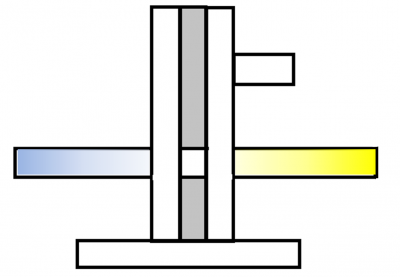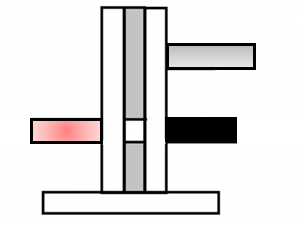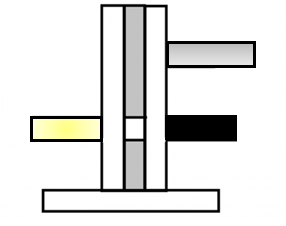The first stage consisted in the establishment of an optogenetic model of Drosophila. For this we wanted to gain insights into the method by performing different experiments in order to optimize several parameters (nutritive ATR concentration, light types, light intensity and additional material). Once this was achieved, we wanted to characterize the dopaminergic neurons coding for incentive value in Drosophila.
In the same way as these dopaminergic neurons determine the direction of learning, we wanted to address the preference/avoidance mediated by these neurons on their own. Because in rats distinctions were made for the coding of reinforcement (in learning) and incentive value (motivation), we considered the possibility of finding differences in the learning and preference indexes mediated by these neurons.
For that purpose we combined optogenetics, as a way to activate neurons, with a T-Maze paradigm, which is a relatively easy method to address this issue avoiding complexity and potential influential factors. Similar to rats lever pressing for a reward, the flies will just need to approach or escape from the blue illuminated area.

Figure 1: Schematic representation of the setup used for the experiments. For assessing the role of different DA clusters in mediating valence we took advantage of flies expressing Channelrhodopsin (ChR) under different DA promoters. These flies were tested in a T-maze so that if an individual fly approached one arm illuminated by the ChR excitable-wavelength (blue), a given cluster is activated whereas when approaching the other arm with non-excitable light (yellow), no neurons are activated.
In contrast to our expectations, we found that the flies preferred activity in most, but not all of the different DAergic subpopulations we were able to test. Interestingly, the pattern of preference we obtained did not correlate very well with the pattern of preference obtained using classical conditioning protocols. We hypothesize that the DA neurons function rather differently when modulating actively ongoing behavior as opposed to when the animals are passively perceiving stimuli in a classical conditioning experiment.
Following this concept, further experimental attempts were made using red or yellow light (light arm) and no light (dark arm). The initial selection of the light arm led to opening of the artificial channelrhodopsin CsChrimson, which activated the targeted DA neuron clusters. The flies chose the light arm when the generated stimulus was appetitive and the dark arm when it was aversive.


Figure 2: Schematic representation of the experimental setup with red (660nm) and yellow (590nm) light.The light intensity was for each at 3000lux.
